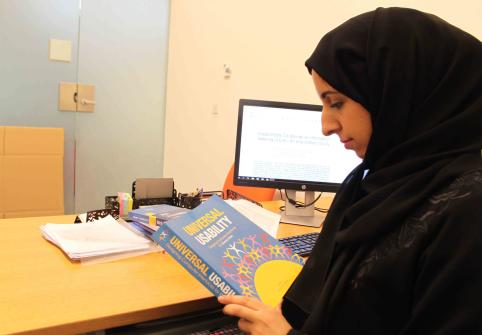News
TECHNOLOGY FOR ALL: TOWARD AN INCLUSIVE WORLD
25 Oct 2016Technology has become more integrated than ever into our daily lives, mostly because large amounts of information have become accessible to a diverse set of users through the Internet.

Technology has become more integrated than ever into our daily lives, mostly because large amounts of information have become accessible to a diverse set of users through the Internet. The Internet has allowed people with disabilities to become more independent and has removed barriers that were previously difficult to overcome. Accessibility to information has become more than a moral obligation that is optional to satisfy. In fact, it is now a legal requirement in many regions around the world. Many governments have integrated accessibility of Information and Communication Technologies (ICT) into their legislation systems—either by specifically implementing their own guidelines or by adapting the World Wide Web Consortium (W3C) guidelines. In 2011 Qatar released the National e-Accessibility Policy, which aims to raise the level of accessibility across all digital platforms. The Policy states that all public domain websites in Qatar must meet WCAG 2.0 double "A" level of international accessibility standards by 2013 for new websites and 2015 for existing websites. Furthermore, at a global level, the United Nations Convention on the Rights of Persons with Disabilities launched in May 2008, stating that accessibility is connected to the evolving definition of disability.
To align with these national policies and international initiatives, the academic sphere has been driven to create more inclusive computer interfaces. Concepts such as ‘inclusive design’ and ‘universal usability’, in addition to the development of W3C work in the field of web accessibility, have been introduced. These concepts and guidelines have brought some attention to the inclusion of non-standard populations in the design and evaluation process.
My research focuses on the area inclusive design from a different perspective. Since all previous research has looked into supporting the individual use of ICT, the technology to support individual web use is relatively well developed. And yet, there is not enough support to integrate users with disabilities in a workplace or social and educational settings. My work addresses this significant gap in current assistive technology, helping to make digital experiences better for people with disabilities and, in turn, for everyone else.
I’m interested in the ways in which we can conduct human-computer interaction research with people with disabilities to learn more about accessibility issues in a variety context. This way, we can find out how they can best be accommodated in inclusive design. The ultimate aim is to tackle all barriers and challenges that can have a negative effect on the inclusion of people with disabilities.

